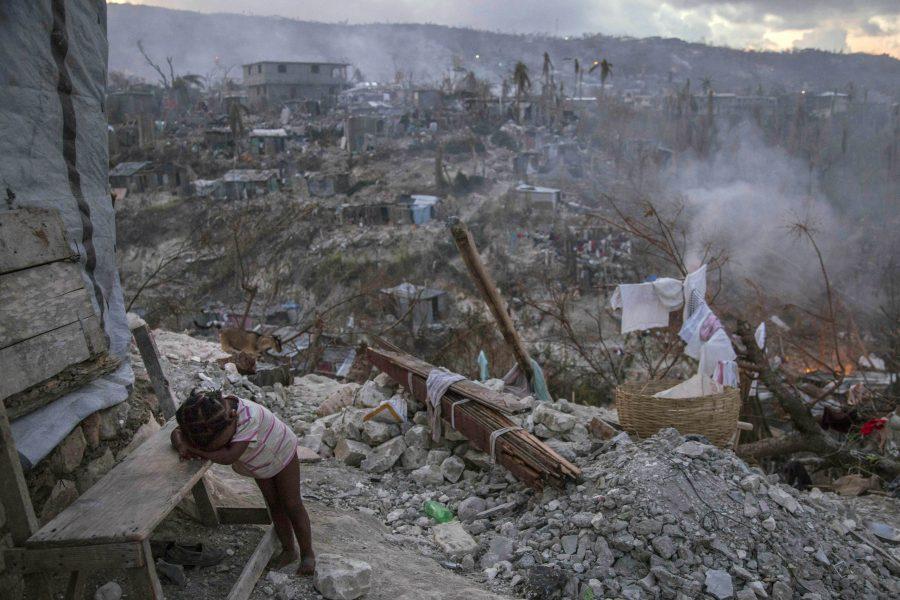Tragedy in Haiti
On 10 October 2016 in Jérémie, Haiti, a toddler rests near collapsed homes on top of a hill. One week after Hurricane Matthew, as schools re-open across the country, more than 100,000 children will be missing out on learning after their schools were either damaged or converted into shelters. Hurricane Matthew passed over Haiti on Tuesday October 4, 2016, with heavy rains and winds. While the capital Port au Prince was mostly spared from the full strength of the class 4 hurricane, the western area of Grand Anse, however was in the direct path. The cities of Les Cayes and Jeremie received the full force sustaining wind and water damage across wide areas. Coastal towns were severely damaged as were many homes in remote mountainous regions. International relief efforts are underway to provide food water and shelter to the people affected by the storm. An estimated 500,000 children live in the Grande Anse Department and Grand South Department in southern Haiti, the areas worst hit by Hurricane Matthew. UNICEF had prepositioned emergency supplies with national authorities to reach up to 10,000 people. On 8 October, six water trucks arrived in Jeremie and Les Cayes, the respective capital cities within the Departments. Additional water and sanitation supplies, such as water purification tablets, water bladders and plastic sheeting, have been dispatched to the most affected departments in the westernmost tip of Haiti. As of 10 October, UNICEF delivered blankets, buckets, water purifying equipment and cholera diagnostic kits.
October 12, 2016
A home,
Food,
Clothes,
Even Parents,
These are some things most of us have and might even take for granted. We wake up each morning, reach for the clothes in our closet, pick out our breakfast from the pantry, and kiss our parents or dogs’ goodbye.
500,00 children have been impacted.
55,000 people still live in shelters from the 2010 earthquake.
750,000 people are in need of assistance.
300 schools have been affected
At this second, there are people who are fighting for their life. Whether it is from a water-borne disease that they contracted or from trying to handle the never-ending hunger they feel.
There is a reality that not everybody faces directly. A reality that most do not like to face or think about. At this very second another human being is suffering through something that you could never even imagine.
United Nations International Children’s Emergency Fund, also known as UNICEF, believes that, “All children have a right to survive, thrive and fulfill their potential- to the benefit of a better world”.
A way that they fulfill this mission is by assisting children that are helpless in dangerous environments. For instance, if they were stuck in the middle of a war-zone, homeless after a natural disaster, or even battling against an outbreak of a disease, UNICEF will go in with supplies and assist them in every way possible.
UNICEF has life-saving supplies in place and are preparing to distribute it to the most affected families in the worst areas.





